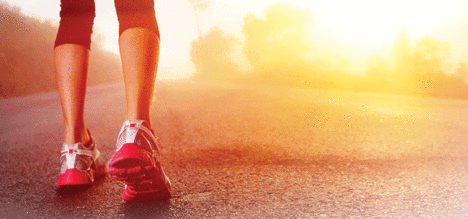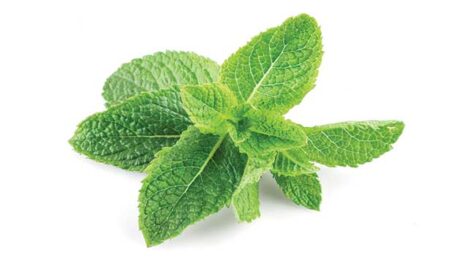Beach Bodies
November 30, 2011

One of the best ways to get in shape and have fun at the same time is to exercise on the beach. You can enjoy the fresh air, the ocean sounds and the sand under your feet as you build fitness and boost your health.
Many activities require little-to-no equipment, and many you can do year round. The sand, water and waves provide a unique environment to train in and offer a great variation to your usual exercise routine.
After you’ve burned off all those kilojoules, you can cool off with a dip in the water and leave feeling refreshed. Following are six fitness activities you can enjoy the next time you visit the beach.
Sand walking and running
Sand-based exercise burns more kilojoules, because the “give” when your foot pushes down forces your body and muscles to work harder to keep you moving. And that “give” has a bonus. It provides cushioning that makes it gentler on your joints, especially in the soft sand.
Vary your workouts between soft and hard sand to add variety. Depending on the nature of the beach, you can also jog in ankle- to knee-deep water to really get your heart racing. Even more advanced is to incorporate sand dune or sand hill sprints into your training, though this is certainly not for beginners. If you’re used to walking or running on harder surfaces, keep your initial sand workouts short. Sand-based walking and running puts extra stress on the Achilles tendon and calf muscles, so make sure to stretch before and after.
Swimming
While physical, swimming is also gentle on your joints. This makes it a great form of exercise for people who have injuries, who are overweight or pregnant. It’s also a great way to elevate your heart rate through short sprints or steady-state exercise.
Water provides a unique form of resistance that can improve your aerobic fitness while toning and strengthening your arms, legs and trunk. You can alternate between freestyle, breaststroke, backstroke and butterfly, depending on your goals, level of skill and fitness.
The beach also gives you the choice between swimming in still water, if there is an ocean pool, or in the open water, if you want a different challenge. If you are swimming in the open water, try to use a wider stroke with your arms, which helps with stability and also utilises the larger muscles in your upper back. Kicking is also important for stability by helping maintain a better body position in uneven water.
Body surfing
A variation on swimming that you can only do at the beach is body surfing. Riding waves on your chest is one of the most exhilarating exercises you can do and it requires little or no equipment, though flippers can be helpful. Because you have to swim fast to catch a wave, it’s like an explosive form of interval training. Spending time in white water is a good workout. You’ll also need to be swim-fit when you keep returning to the point where the waves are breaking.
An important technique is to firm up your legs and trunk to make your body rigid like a board when you first feel yourself being picked up by the wave. Before heading out into the water, check for rips, rocks, reefs and other surfers, all of which are hazards to a body surfer.
Start out in small surf to build your confidence and make sure to swim between the flags on a patrolled beach.
Beach volleyball
It’s a great way to get fit, burn fat and enjoy a dip in the big blue ocean afterwards. It’s an activity you can enjoy with family and friends while learning a new skill. Participating in a regular competition may also help you develop a higher level of unwavering commitment toward group activities than you would by yourself, which is great for your motivation.
To get the most out of beach volleyball as an exercise, get involved as much as you can and push yourself a little harder each game. It’s a great way to add variety to your routine and in some ways you won’t even feel like you’re exercising.
But beach volleyball does come with injury risks due to the short burst of exertion and lateral movements, which place extra demands on your muscles, ligaments and joints. So warm up properly, strengthen your leg muscles to better prepare yourself for beach volleyball, and be sure to stretch afterwards.
Paddling
Get hold of a rescue board, wave ski, surf ski or even a stand-up paddle board, and add paddling to your exercise routine. There are few better ways to train while enjoying the scenery and spending time on the water.
It’s a great exercise to strengthen and tone your upper body while also strengthening your abdominal core, because your torso is heavily involved in the action of paddling. It’s also a great way to cross-train, because you incorporate a variety of different exercises into your routine to spread the workload on different muscle groups.
It’s estimated that just 20 minutes of paddling burns off around 500 kilojoules.
As a word of caution, paddling can be dangerous in surf when the conditions are rough. Beginners are advised to develop their confidence and paddling fitness on days when the ocean is calm, or on still water.
Beach circuits
If you want to build strength and burn fat at the same time, circuit training can be a worthwhile addition to your beach exercise routine. It combines a variety of exercises aimed at training all the major muscle groups while also boosting your cardiovascular fitness.
By performing strength-training exercises with cardiovascular exercises in between, your muscles get a workout while your heart rate stays elevated, giving you a “best of both worlds” workout.
For example, you might perform 20 push-ups, followed by a 2-minute jog, followed by 20 sit-ups, then 2 minutes of swimming. You can adjust the duration and type of exercises you choose to perform depending on your goals, your fitness and the beach conditions.
If you live near a beach by the sea or lake, these suggestions can help you stay fit while having fun!
Safeguarding your outdoor exercise
While the beach is a geat place to add variety and enjoyment to your exercise routine, it’s also a place where heat-induced illness, injury and dehydration can occur. Consider the following tips before beginning your summer workout;.
Drink plenty of fluid. Make sure you drink before, during and after you exercise. Don’t wait till you’re thirsty, as you may already be partially dehydrated. Little sips of cool water are best, while sports drinks are helpful if your activity is longer than 60 minutes.
Schedule your exercise wisely. Try to plan your exercise of activities early in the morning of later in the evening, when the humidity and temperature are lower. Avoid when sun when it’s the strongest.
Slip, slop, slap. Follow the normal rules of sun care such as slipping on a shirt, slopping on sunscreen (30+ SPF is best) and slapping on a hat or cap. If you are sweating heavily, you mayh ave to apply sunscreen more frequently.
Know the signs of dehydration. Early signs of dehydration include thirst, light-headedness, tiredness, grogginess, nausea and a cold, clammy feeling. If you ignore these wanring igns, more serious symptoms may develp, including heat cramps, heat exhaustion and heat stroke.
Take a break. It’s estimated that running three kilometres in the heat is equivalent to five kilometres in normal temperatures. Therefore, if you plan on going for more than an hour, you should schedule regular breaks for yourself. If you are exercising in the heat, do you ecercises in shorter bouts. It may even be wise to postpone your workour or try a water-based activity if it’s too hot.
Wear suitable clothing. Wear as little clothing as possible to allow for greater heat dissipation. Choose clothes that are lightweight, loose fitting, light coloured (to reflect the sun’s rays) and made of a material that absorbs water.
Here are some exampls of muscle strethening and cardiovascular activities you can perform at the beach:
Muscle Strenthening Exercises
Push-ups
Sit- ups
Lunges
Body weight squats
Dips
Cardiovascular Exercises
Walking
Running
Sand Hill Sprints
Swimming
Star Jumps








